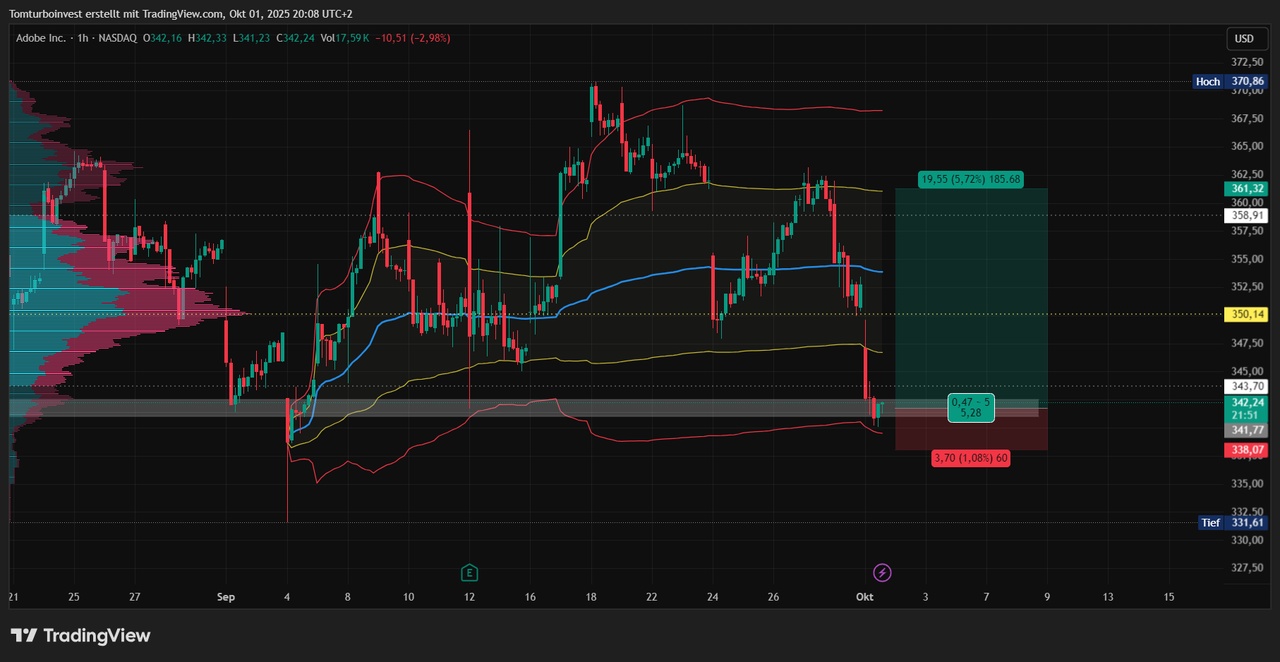$ADBE (+0,13 %) will be in my trading portfolio for a few days. $MMK (+2,3 %) and $VER (+0,78 %) were kicked out this evening, but a first tranche of Adobe will be added to the portfolio. Quite tightly hedged with speculation on a return to VWAP and above.
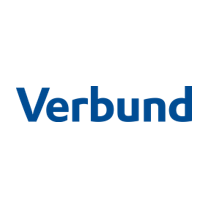
Verbund
Price
Debate sobre VER
Puestos
262 more quick trades before the vacation 😁
⚠ Only for trading fans - otherwise keep scrolling 😅
$BE (+11,76 %) as a day trade - nicely caught on the rise - as always after VWAP of the session
$VER (+0,78 %) as a swing trade with planned TP from 65€+
Edit: $BE (+11,76 %) has just been closed. $VER (+0,78 %) continues with an OCO order of 100 shares (62.50€ / 67.40€)
Edit2: $VER (+0,78 %) triggered the limit order during my vacation as planned and is also out again 💰
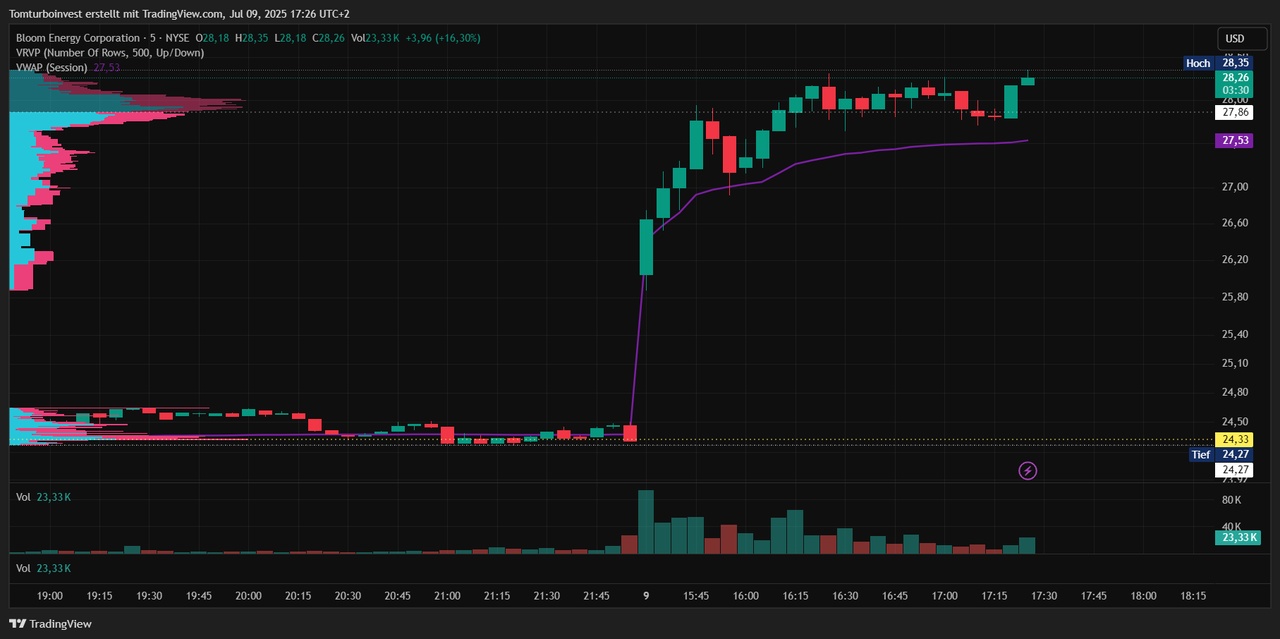
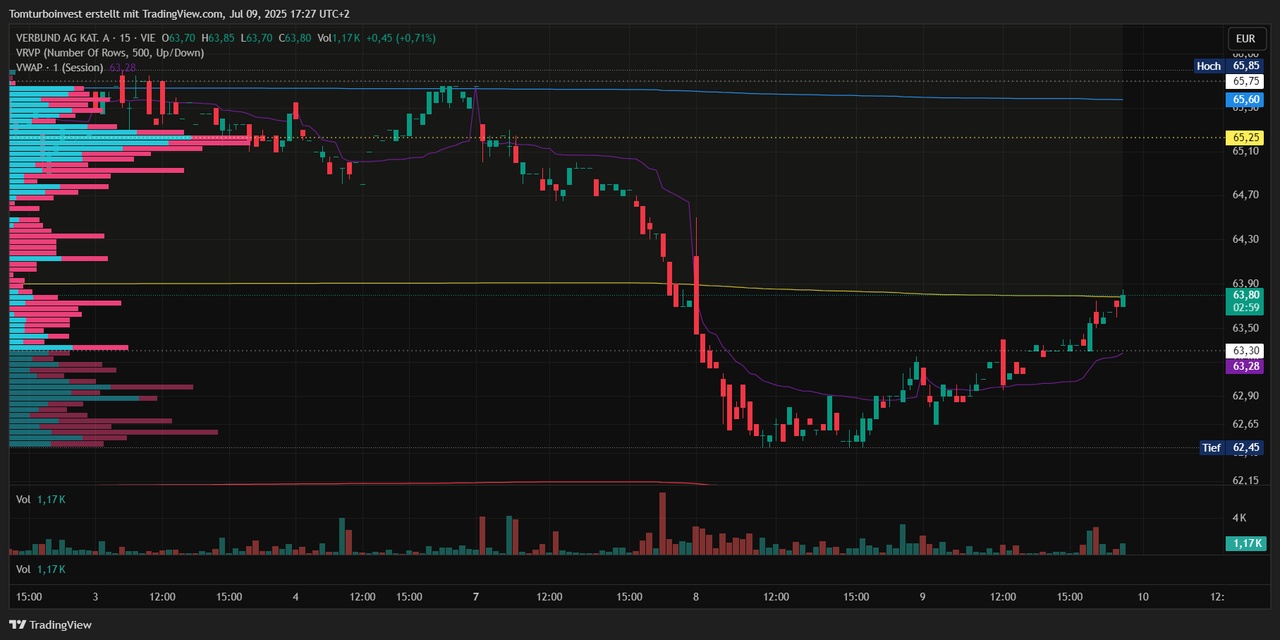
Even though I don't think day trading is for me. Monthly trading is enough for me 😁
Trading Part4 - Deepdive indicators 📈📉☕
As always, first the link to the first post, where you will also find the links to all the other parts https://getqu.in/cbIOkg/
Today there are a few more details on the indicators from part 3 https://getqu.in/9XGYtO/
As described in part 3, I start my analysis with the SMA 200 / 50 / 5 daysto get an overview of the trend.
Example $UBER (-0,46 %)
For me, an important setting for the SMA is that I always use the SMA regardless of my chart setting always on a daily basis. daily basis. This means that even if I have set the chart to weekly or 4h, it always shows me the SMA on a daily basis.
Example $UBER (-0,46 %) 1h hour chart - but the SMA are still on a daily basis, not like the default setting, which always refers to the chart - then the SMAs would be calculated on a 200 / 50 / 5 hour basis!
Next, I'll get the VRVP to see the volumes. I have set the chart to the range since Uber has been in an overarching sideways phase.
I can see the price area with the highest volume and the distribution where 68% of the volume has taken place.
My VRVP settings are as follows, I adjust the line size depending on the visible range - the larger the range, the larger the number of lines.
So, I now have a good overview of the trend after a few minutes.
Now it's time to continue with the VWAP. My anchored VWAP I place it in a prominent position for me. In this case the last low before the start of the sideways phase. This is how I see the "DNA" of Uber - How does Uber behave in the statistical areas of the volume-weighted average price.
For my short-term trades, I zoom into the close range, but the anchored VWAP remains. I only switch to the 1 hour chart and the last few months.
The white circles then show potential entries and exits for me. The orange circles at the bottom show the earnings, there's always a lot of movement😁
Of course, I also look in detail at the price action, i.e. the candles per time unit.
In principle, this describes my main procedure for determining the buy/sell point.
That's it 🤷♂️ has been working for me for a long time with the outcome as described in part 2 https://getqu.in/TVNdpR/
Because of the overview, I have hidden the VRVP in the VWAP views, but I always leave it on for my analysis.
Example anchored VWAP with VRVP and SMA5 for the short-term trend
Example anchored VWAP with VRVP and VWAP on a weekly basisI can see where the VWAP of the current week has moved. It's also nice to see how and where the big volumes of the week have positioned themselves 😁
So, that's a bit more detail on my setup. As you can see, with a little practice and routing, you can analyze a stock in a short time. For me, such an analysis usually takes no longer than 10 minutes and I know whether a trade makes sense for me and where to place my buy and sell orders.
PS: I have found a clever script on TradingView for some of my stock screener filters. You can always display some criteria live - in the chart at the bottom right
You can find it under the indicators: Ticker Dashboard For Better Stock Selection
$ADYEN (+0,87 %)
$MMK (+2,3 %)
$MRK (-0,23 %)
$KTN (+1,34 %)
$BRBY (+0,02 %)
$OMV (-0,21 %)
$VER (+0,78 %)
$BG (+2,47 %)
$VOE (-0,92 %)
$ZAL (-1,53 %)
$VRTX (+2,37 %)
$RDC (+0,88 %)
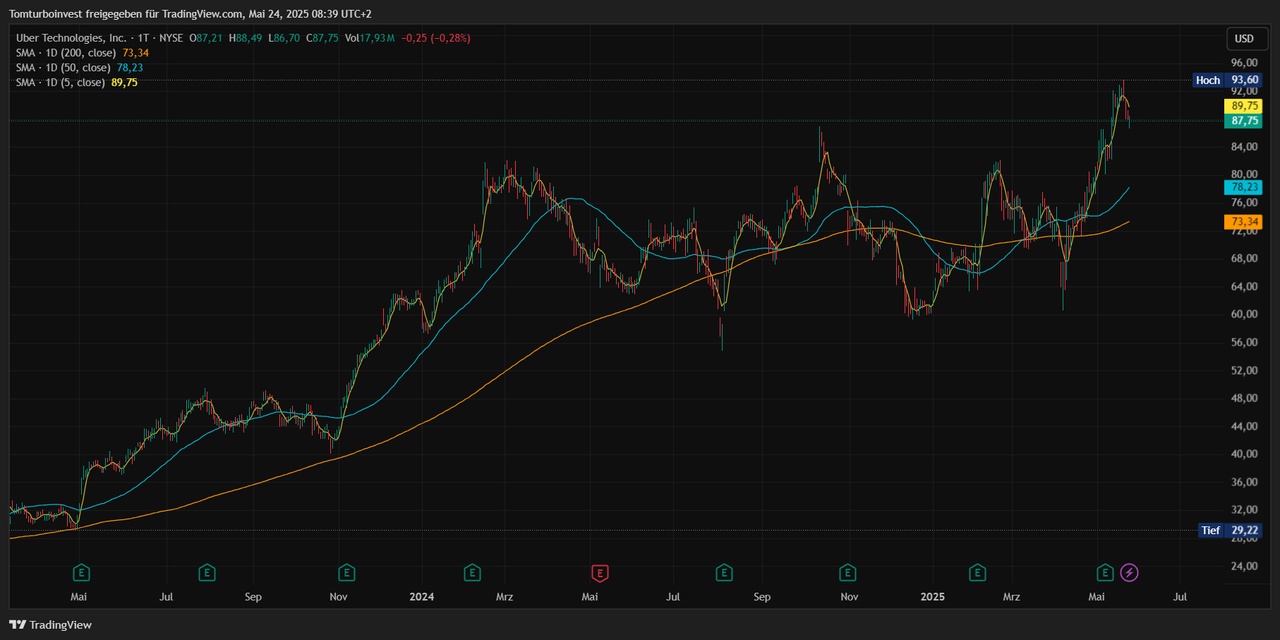
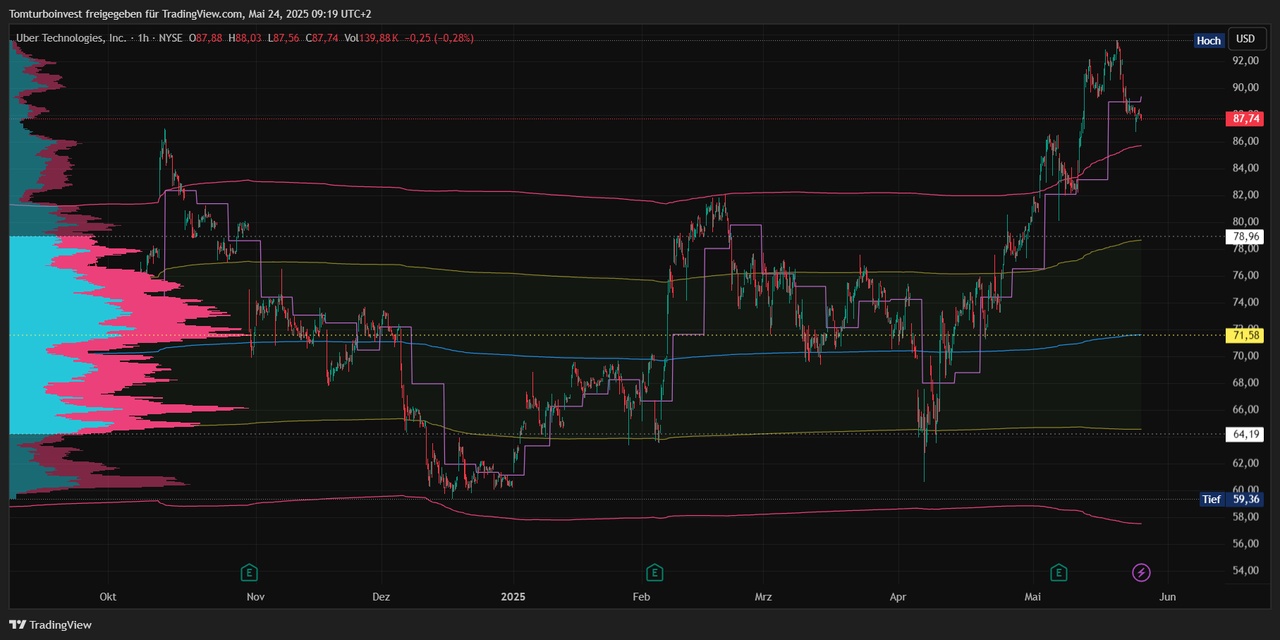
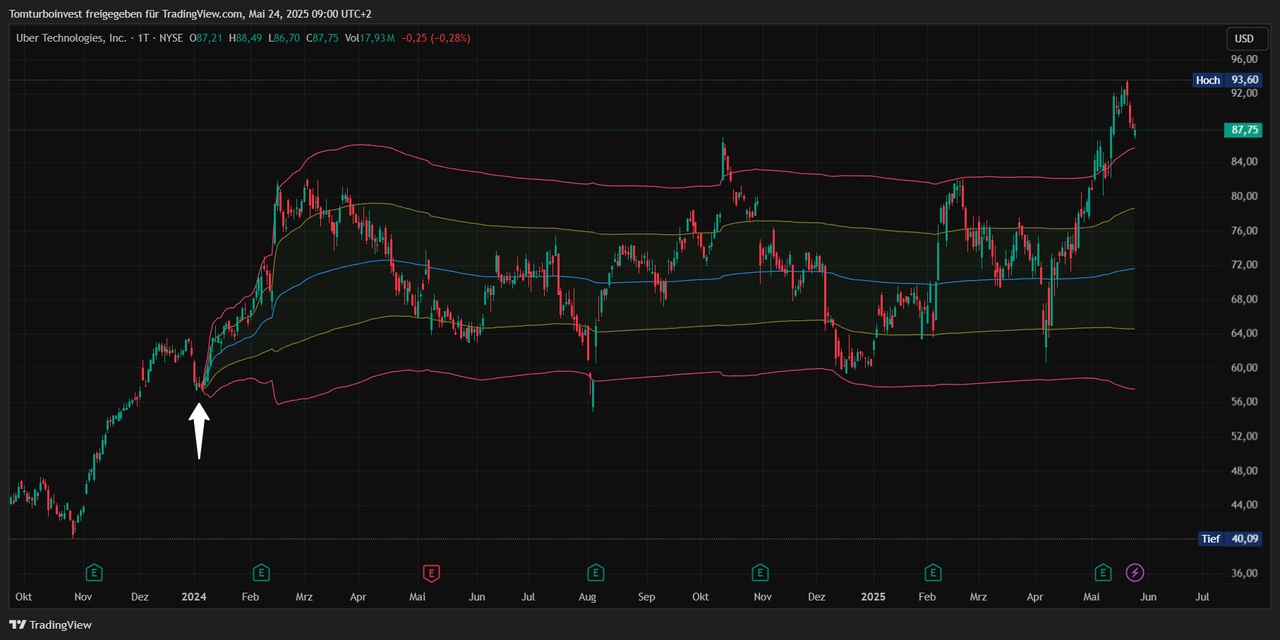
+ 6
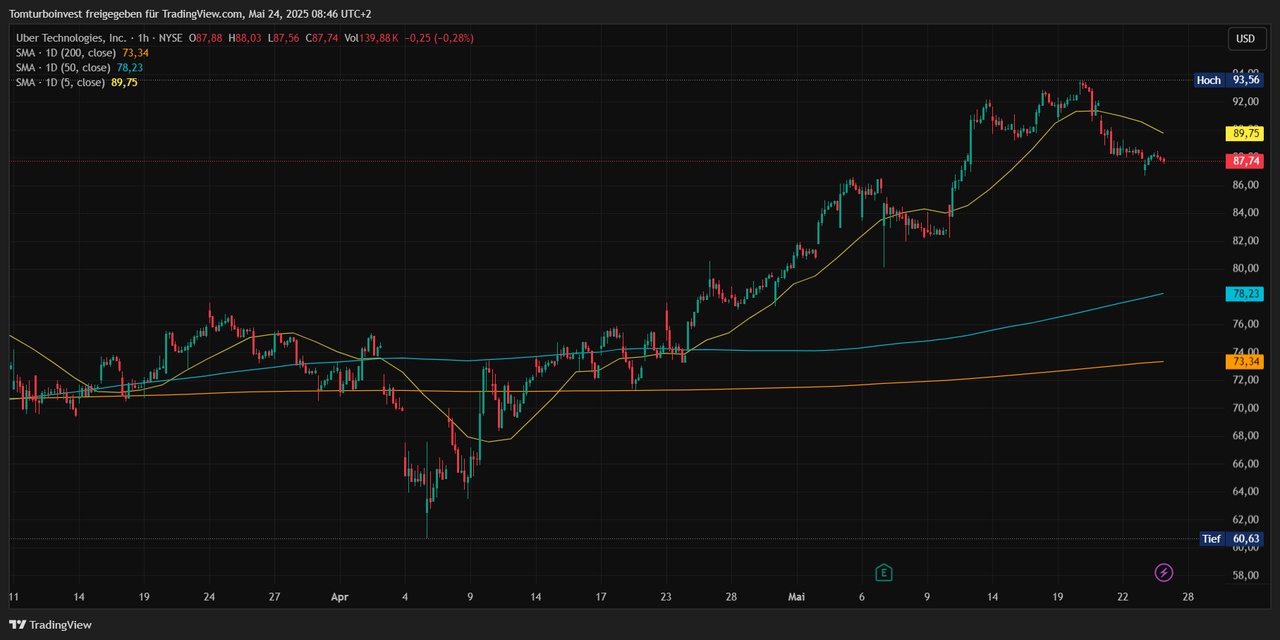
It reads very well. 💪🏼
Verbund is struggling with the €64, on to other opportunities...💰
$VER (+0,78 %) In times of nice vola, one gets impatient from time to time, as there are so many nice stocks that are oscillating in the wake of the Trump madness and don't yet know where they want to go.
Every little bit helps, or as the swing trader says: "Back and forth makes more 😁"
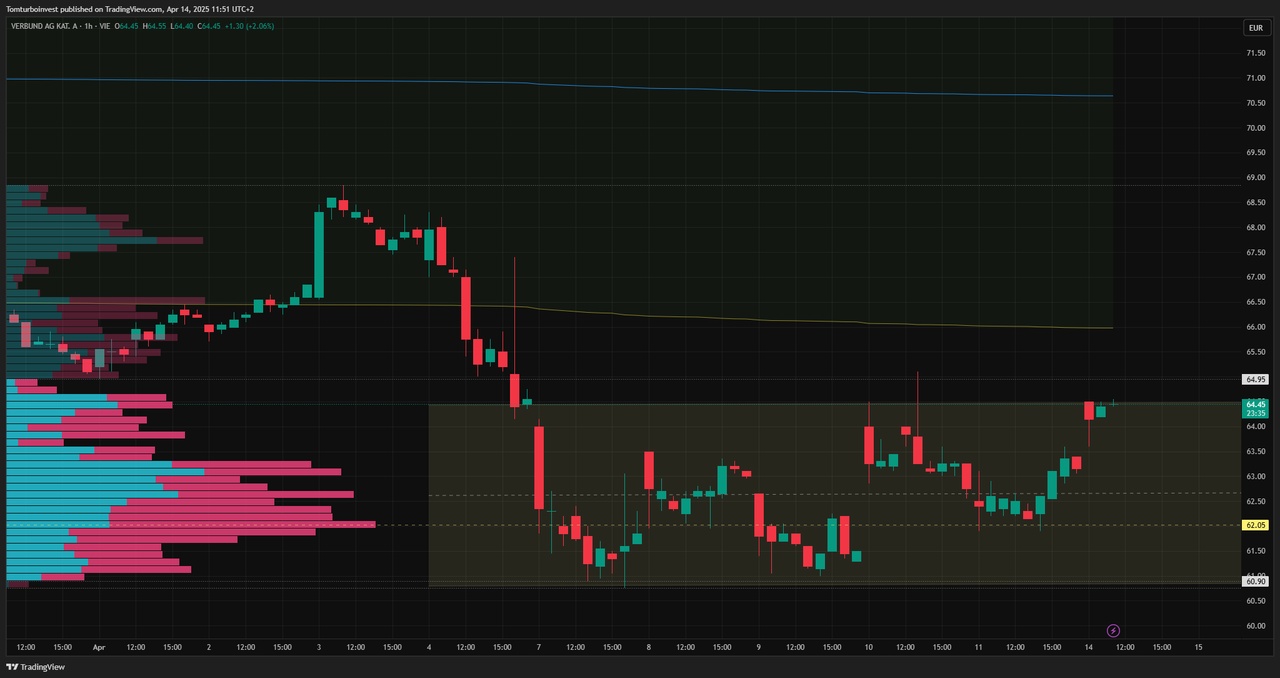
Tariffs Tarrifs Tariffs 🤪
Or how you can make a fool of yourself all over the world.
No deal with Putin, no deal with TikTok, no deal with China.... In the end, Trump had to back down again. What hedge fund managers, US industry and high-ranking Republicans had been calling for days ago came true yesterday. Just before his political "suicide", the ripcord was pulled.
My portfolio conclusion: it has once again proven true - everything that falls quickly can also rise quickly again, and vice versa📉📈 Somehow a crash in fast motion.💥 It's not over yet. We are still a long way from the highs.
The last few days around 30k have been invested in the portfolio, even several times due to the nice volatility, as I've been in and out with the whole amount about 3 times in total.
Yesterday morning I went back in with the stocks that were taken out the day before. Orders closed $UBER (-0,46 %)
$RDC (+0,88 %)
$KTN (+1,34 %)
$VER (+0,78 %)
$ZAL (-1,53 %) and also the $WEBG (+1,05 %) was expanded with approx. 5k. I like to invest the trading proceeds in ETFs to steadily expand the core.
How did you get on? Were you brave enough to get in?

Then we collect the shares again, they have returned nicely over the last few days (-10%) 😅
$KTN (+1,34 %)
$ZAL (-1,53 %)
$VER (+0,78 %) all companies that I would like to have back in my portfolio.
Closed a few trades today to replenish the cash💰
Even though I $KTN (+1,34 %) Kontron $ZAL (-1,53 %) Zalando and $VER (+0,78 %) Verbund still have potential. With the drop in prices, capital can soon be deployed more profitably. I also expect a backlash from the EU and all other affected countries in the next few days, which could result in another downward jolt.
According to the motto that only realized profits are real profits, I am waiting to see what happens over the next few days...
@Epi I need an insider tip on when would be a good time to top up your certificate😅
Closed a few trades today to replenish the cash💰
Even though I $KTN (+1,34 %) Kontron $ZAL (-1,53 %) Zalando and $VER (+0,78 %) Verbund still have potential. With the drop in prices, capital can soon be deployed more profitably. I also expect a backlash from the EU and all other affected countries in the next few days, which could result in another downward jolt.
According to the motto that only realized profits are real profits, I am waiting to see what happens over the next few days...
@Epi I need an insider tip on when would be a good time to top up your certificate😅
In the short term, you can try to catch a rebound in these stocks. This could be quite strong (+10%). The idea would be for all three stocks to benefit from a crashing USD.
In the medium to long term, I would perhaps wait until the broad market has calmed down somewhat and the upside momentum picks up again. Nobody knows when that will be the case. Perhaps in the next few weeks when new alliances are formed worldwide? Japan and China are already making common cause against the USA - who would have thought it?
Verbund - fun that has been a profitable business for us for many years 😂
$VER (+0,78 %) Verbund has many pumped storage power plants, the "peak electricity" can be sold easily and at a high price when others urgently need electricity, or bought at a negative price when others have too much electricity.
Since this YT short was just shown to me, and I am a Verbund shareholder, I didn't want to withhold this fun from you on Saturday evening 🤣
https://youtube.com/shorts/I8_KUQqhv_A?si=-brHqt9ivcOanVS2
PS: Years ago, a German business magazine once wrote "The Austrians are popping the champagne corks twice"
Enjoy the weekend!
Neukauf oder Aufstockung
$NU (+0,86 %) 10.1€ circa
$VER (+0,78 %) 68,95€ circa
$COLO B (+0,44 %) 106..... and thus the 4 Danish value.
Valores en tendencia
Principales creadores de la semana


